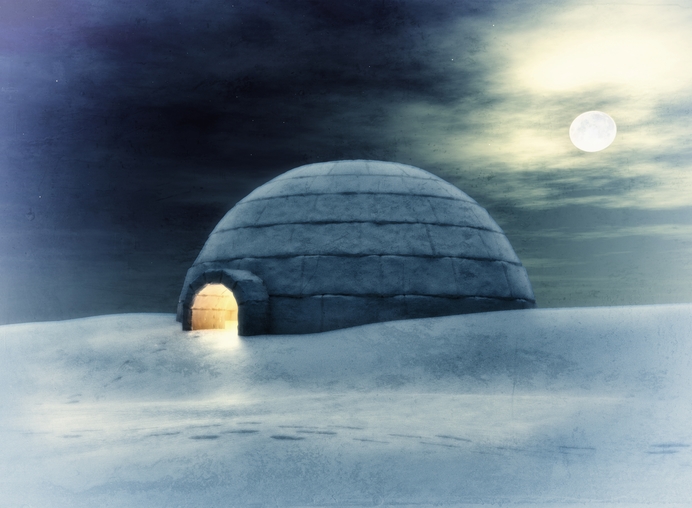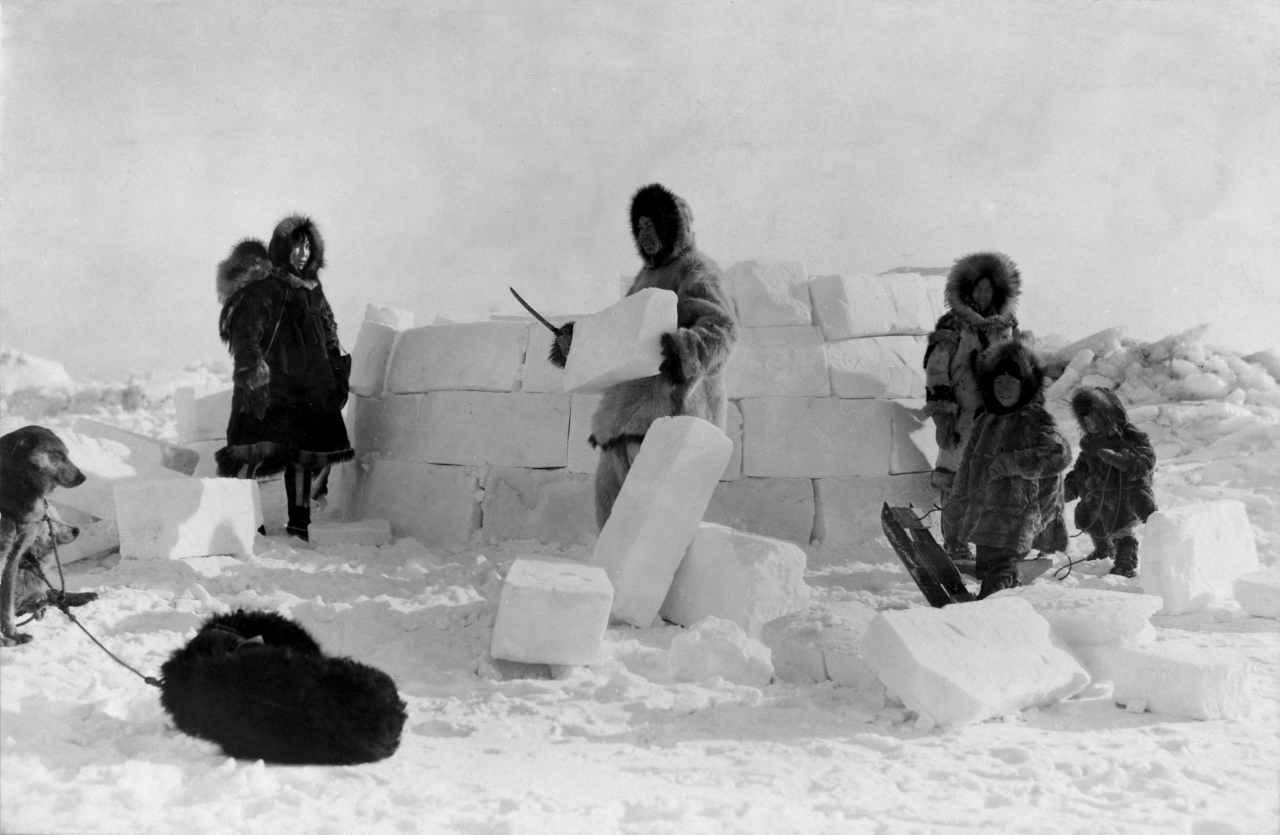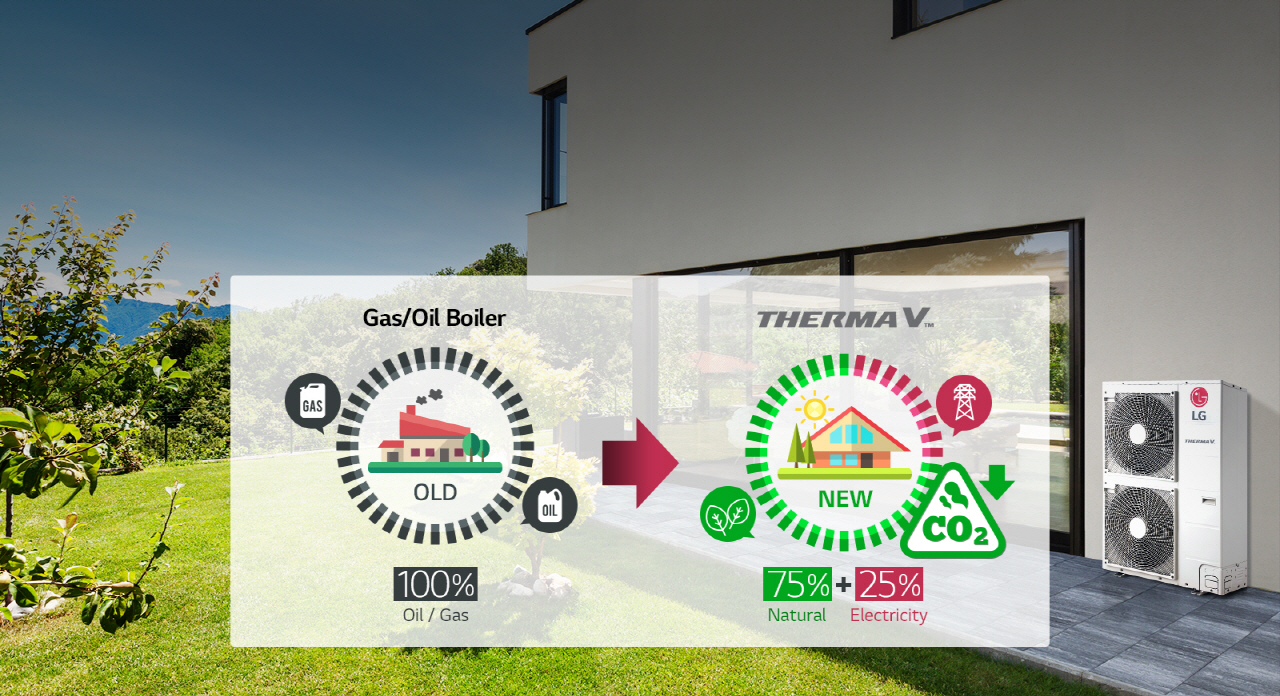
The Inuit, Yupik and Aleut are all peoples native to the Arctic region known for its brutal and sometimes deadly winter environment. The people living in this climate have adapted their lifestyles to the environment and perfected their survival skills for every facet of their existence. One of the most demonstrative of their environmental adaptations is the igloo. The igloo design stands the test of time and testifies to the innovation and resourcefulness of the people in the region.
 Native Inuit people building an igloo from blocks of ice and snow
Native Inuit people building an igloo from blocks of ice and snow
(Source: https://commons.wikimedia.org/wiki/File:Inuit-Igloo_P.png)
Inside these frozen structures, people light fires to stave off the below-freezing temperatures and create a comfortable 20-25°C (68-77°F) environment without the need for additional heating sources. The bitter cold air outside the igloo keeps the structure from melting, while the warmth inside creates condensation and reinforces the walls to ensure maximum stability. These compact habitats are designed to survive the long northern winters and provide protection from the cold, but they also offer an eco-friendly element that is becoming ever more important is this age of environmental awareness. The resources utilized to construct an igloo are entirely renewable and leave behind no waste. This sort of eco-friendly solution is what HVAC manufacturers are aspiring to achieve today.
For most of us, building an igloo is not an option. However, Air to Water Heat Pump (AWHP) solutions are some of the most eco-friendly technologies on the market for keeping a building warm during the cold winter months. No compacting snow, chopping wood or gathering kindling necessary. This state-of-the-art heating solution reduces electricity consumption substantially in comparison with other technologies by transferring heat from the air outside to create a warm, dry environment inside.
 Therma V Monobloc uses eco-friendly R32 refrigerant while delivering effective heating
Therma V Monobloc uses eco-friendly R32 refrigerant while delivering effective heating
One of the best AWHP solutions on the market is our Therma V. The Therma V is equipped with the most state-of-the-art AWHP innovations available and delivers unparalleled heating performance and energy efficiency. This powerful and ecologically-sound solution uses a merely 23-25 percent of the electricity consumed by conventional heating systems, which translates to four-times the energy efficiency. In addition to its green credentials where energy-saving is concerned, the Therma V R32 Monobloc (one of the standout models of our Therma V lineup) helps to protect the environment with the utilization of eco-friendly R32 refrigerant. R32 has a low Global Warming Potential (GWP) rating of 675; two thirds lower than that of conventional R410A refrigerant (GWP of 2,088), meaning the Therma V R32 Monobloc doesn’t add unnecessarily high concentrations of greenhouse gases into the Earth’s atmosphere. The stellar performance of this new model is also driven by a 4.45 seasonal coefficient of performance (SCOP) in heating operation and will boast an A+++ Energy-related Product (ErP) label by September of 2019.
 Therma V efficiency reduces costs and the carbon footprint of AWHP solutions
Therma V efficiency reduces costs and the carbon footprint of AWHP solutions
In the same way that the ice walls of an igloo provide insulation and protection from the cold, Therma V delivers balanced warmth and comfort. By piping in ambient heat from the air outside, our AWHP solutions deliver more energy through heating than they consume in the form of electricity. The Therma V combines 1kW of electricity with 3kW from ambient heat sources to provide 4kW of energy. Compared with conventional solutions using the same amount of electricity, Therma V generates roughly three-times the amount of heat. Additionally, our wide louver fin and optimized heat exchanger path help to conserve even more energy, boosting reliability and facilitating an improved heat exchange rate. Therma V models also implement durable inverter water pumps that further minimize energy consumption.
AWHP solutions are providing reliable and quick heating with unmatched efficiency that minimizes the stress on the environment while conserving resources. Taking a cue from the native peoples in the Arctic, we at LG are committed to providing warmth and efficiency while minimizing the carbon footprint and environmental impact of our products. How are you keeping warm this winter? Consider surviving the cold with the eco-friendly LG Therma V.
* Analysis conducted using LG Air Conditioner Technical Solutions (LATs), taking into account installation and operating costs over a ten-year period. Simulation used identical weather conditions every year. Simulation results may vary depending on incentive conditions, installation costs, material costs, etc.


































